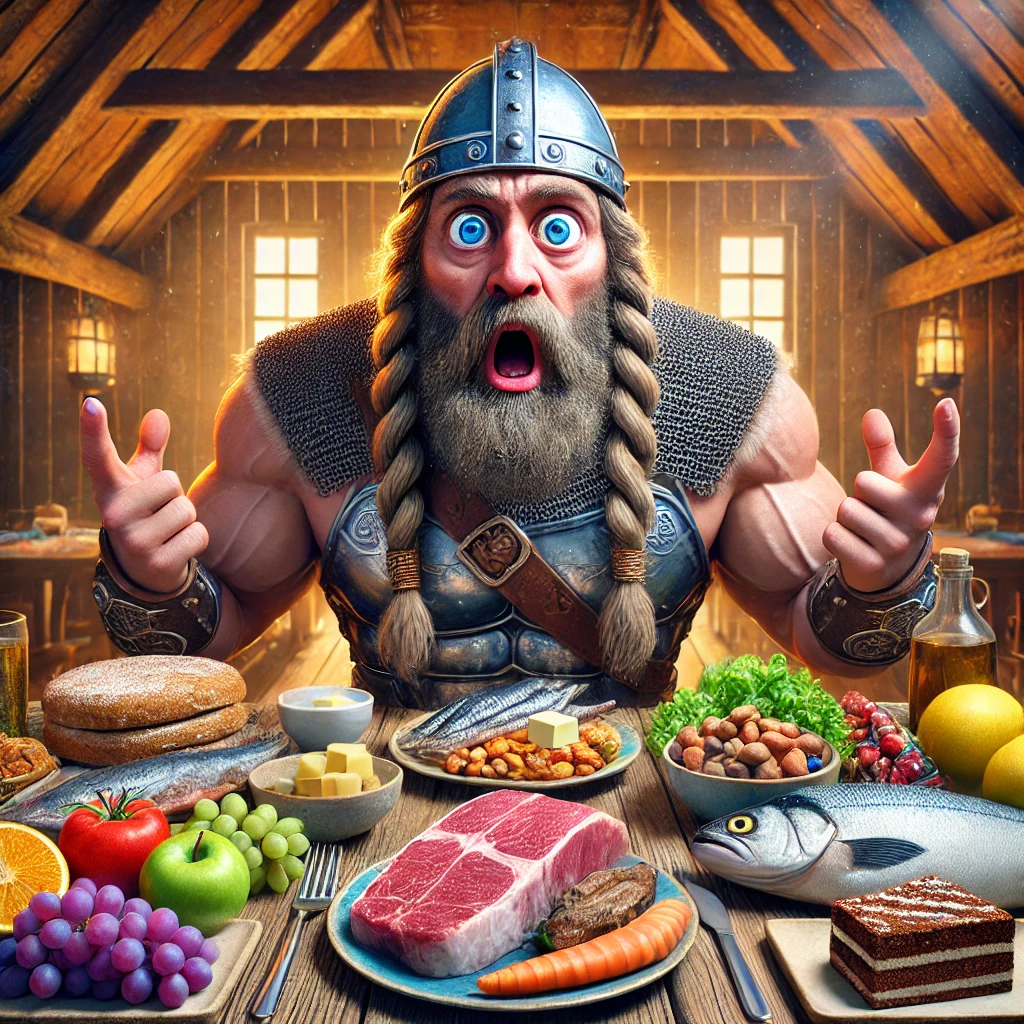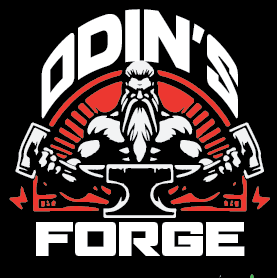
Diet Wars: Choosing Your Path to Modern-Day Viking Strength
Share
1. The Mediterranean Diet: The Viking’s Cousin Across the Sea
Origins:
Rooted in the traditional eating habits of countries bordering the Mediterranean Sea, such as Greece, Italy, and Spain, this diet gained global popularity after researchers observed lower rates of heart disease in these regions during the mid-20th century.
Health Benefits:
• Reduces the risk of heart disease and stroke due to high consumption of omega-3 fatty acids and healthy fats like olive oil.
• Supports brain health and may reduce the risk of Alzheimer’s and dementia.
• Promotes gut health through fiber-rich legumes, whole grains, and vegetables.
Cons:
• Can be expensive due to the reliance on fresh produce, high-quality olive oil, and seafood.
• May require significant meal prep and planning.
• May not suit those with allergies to nuts, seafood, or dairy.
2. The Keto Diet: Fuel for the Modern-Day Warrior
Origins:
Originally developed in the 1920s as a treatment for epilepsy, the ketogenic diet has since become a popular method for weight loss and metabolic health.
Health Benefits:
• Promotes fat loss by forcing the body to burn fat for fuel in the absence of carbohydrates.
• Stabilizes blood sugar levels, which may benefit those with type 2 diabetes or insulin resistance.
• Enhances mental clarity for some individuals due to ketone production.
Cons:
• Can be challenging to sustain long-term due to the restrictive nature of the diet.
• May cause nutrient deficiencies without careful planning.
• “Keto flu,” a collection of symptoms like fatigue and nausea, is common during the initial adjustment period.
3. The Paleo Diet: Eating Like an Ancient Raider
Origins:
Inspired by the diets of our Paleolithic ancestors, the Paleo diet eliminates modern processed foods in favor of what would have been available to early humans.
Health Benefits:
• Reduces inflammation by removing processed foods, refined sugars, and additives.
• May improve digestion and reduce bloating due to the exclusion of grains and dairy.
• Focuses on nutrient-dense foods like lean meats, vegetables, and nuts, promoting overall health.
Cons:
• Can be restrictive, excluding food groups like dairy, legumes, and grains, which are sources of essential nutrients.
• May be expensive due to the emphasis on organic and grass-fed meats.
• Difficult to maintain in social or dining-out settings.
4. The Nordic Diet: Straight from the Homeland
Origins:
Inspired by the traditional diets of Scandinavian countries, this diet emphasizes locally sourced and seasonal foods, with a strong focus on sustainability and whole, unprocessed ingredients.
Health Benefits:
• Supports heart health with fatty fish like salmon, mackerel, and herring.
• Rich in fiber, promoting gut health and stabilizing blood sugar levels.
• Encourages sustainable eating practices that are good for the planet.
Cons:
• Limited availability of traditional Nordic ingredients in some regions.
• May involve significant meal prep due to the reliance on fresh and whole foods.
• Restricts processed foods, which may require lifestyle adjustments for some individuals.
5. Intermittent Fasting: The Feasting and Fasting Cycle
Origins:
Intermittent fasting has been practiced for centuries in various cultures and religions as a way to promote spiritual health. Recently, it has gained popularity as a weight loss and metabolic health strategy.
Health Benefits:
• Promotes weight loss by creating a calorie deficit without requiring specific food restrictions.
• Improves metabolic health by increasing insulin sensitivity and promoting fat burning.
• Supports cellular repair and longevity through a process called autophagy.
Cons:
• Can lead to fatigue, irritability, or headaches, especially during the adjustment phase.
• May not be suitable for individuals with a history of eating disorders or certain medical conditions.
• Requires careful planning to ensure nutrient needs are met during eating windows.
Thoughts from the Forge:
Each diet offers unique benefits but also comes with potential drawbacks. A Viking-inspired approach might focus on the best elements of these diets: hearty, whole foods, balanced meals, and sustainability. By understanding the origins and nuances of these diets, you can choose a path that fuels your body and aligns with your health goals.
Which diet calls to your inner Viking? Let us know! Sign up for email updates for the newest articles and news to start your own journey to strength and vitality!
